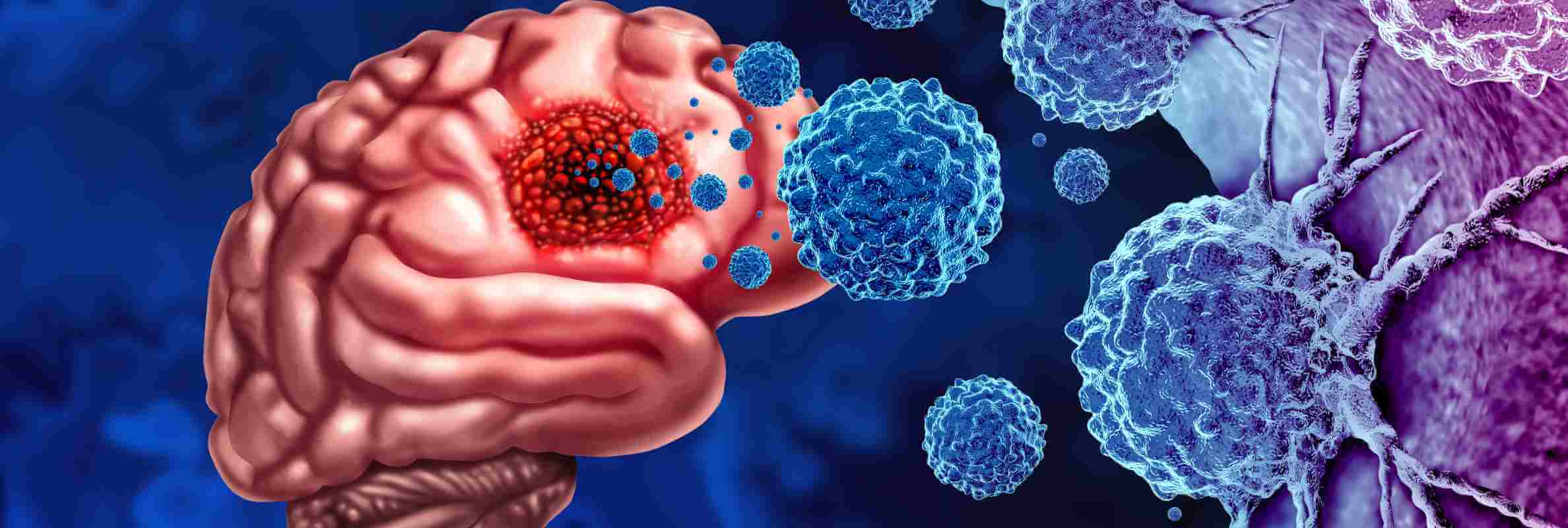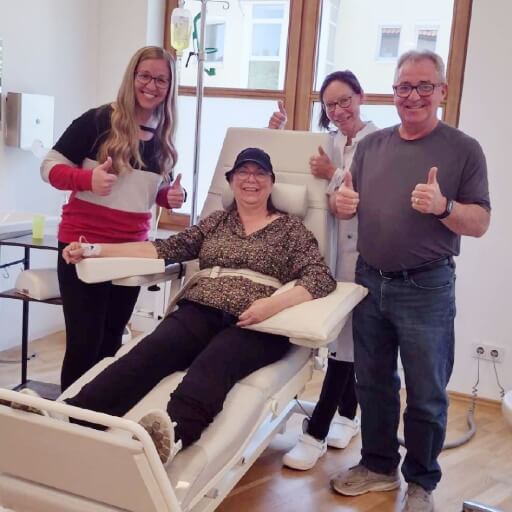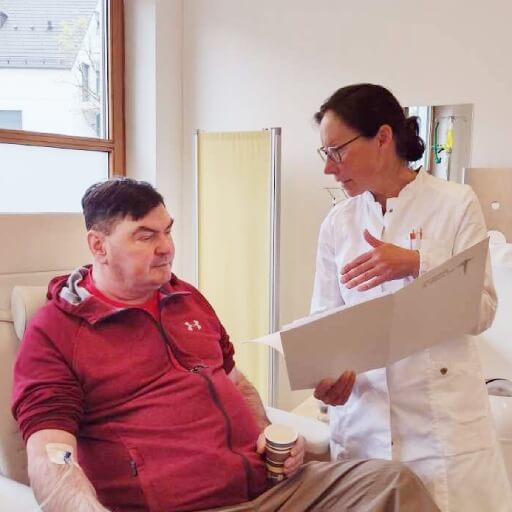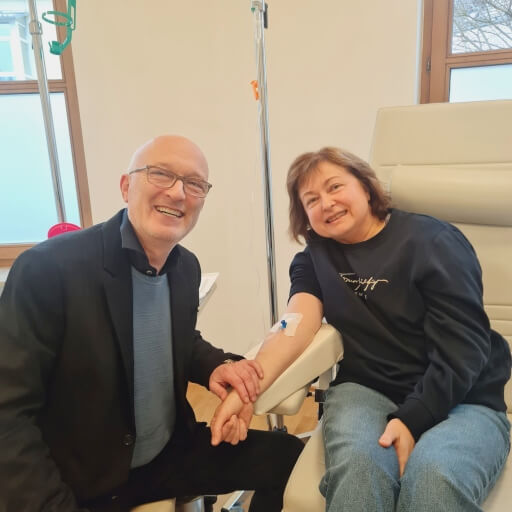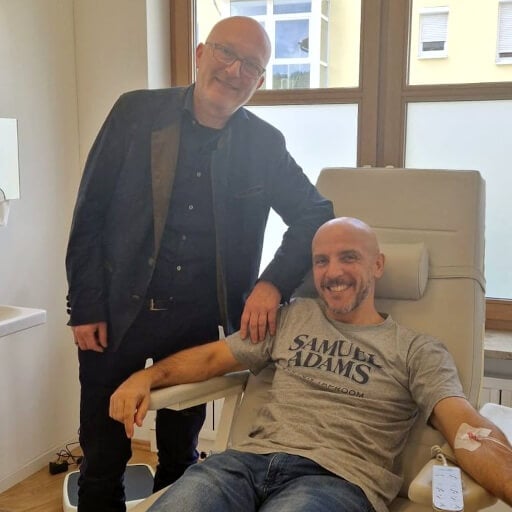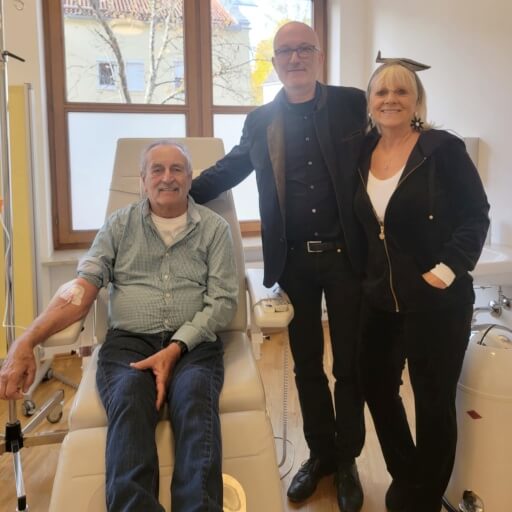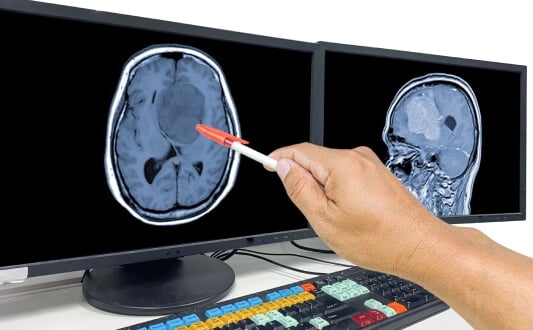مواجهة تشخيص الإصابة بالورم الأرومي الدبقي (GBM) قد يكون أمراً شاقاً، ولكن العلاجات الرائدة تعمل على تغيير النتائج للمرضى حول العالم. يتناول هذا الدليل الشامل البروتوكولات الراسخة والعلاجات المبتكرة التي تمتد إلى ما هو أبعد من الرعاية التقليدية. إن فهم جميع الخيارات المتاحة أمر بالغ الأهمية لاتخاذ قرارات مستنيرة خلال هذه الرحلة الصعبة. يُقدم فريقنا إرشادات شخصية لإيصال المرضى بمتخصصين رائدين وأحدث علاج للورم الأرومي الدبقي الذي يتوافق مع احتياجاتهم الفريدة، مما يضمن الوصول إلى أكثر الأساليب الواعدة بغض النظر عن موقعهم. بفضل دعم مُقدمي الرعاية الخبراء أثناء التنقل بين الأنظمة الطبية المعقدة، يمكن للمرضى التركيز بشكلٍ كامل على ما هو أكثر أهمية – تعافيهم وصحتهم.
فهم الورم الأرومي الدبقي: نظرة عامة
الورم الأرومي الدبقي متعدد الأشكال (GBM) هو الشكل الأكثر عدوانية لسرطان الدماغ الأولي. على الرغم من ندرته النسبية التي تصل إلى 3.2 حالة لكل 100.000 فرد سنوياً، وهو ما يمثل ما يقرب من 48٪ من جميع الأورام الخبيثة في الدماغ. على الرغم من أن إحصائيات البقاء على قيد الحياة التاريخية تُظهر أن 40٪ فقط من المرضى نجوا من السنة الأولى بعد التشخيص، إلا أن هذه الأرقام تتحسن بسرعة حيث تُصبح العلاجات الجديدة للورم الأرومي الدبقي متوفرة على نطاق أوسع.
الأساليب المبتكرة مثل العلاج المناعي بالخلايا المتغصنة، والعلاج الحراري الخلالي بالليزر، وتقنيات الأشعة التداخلية المتقدمة تعمل على تحويل مشهد العلاج. المرضى الذين يتلقون الرعاية في المراكز الدولية الرائدة يستفيدون من العلاجات المُستهدِفة بدقة والتي لا تتوفر في العديد من المستشفيات المحلية. المراكز المتخصصة غالباً ما تتعاون مع مجموعات الدعم، مقدمةً رعاية شاملة تُلبي الاحتياجات الطبية والنفسية.
الاختلافات الكبيرة في النتائج بين الرعاية القياسية والمتخصصة تُسلط الضوء على أهمية طلب العلاج في المراكز التي تتمتع بخبرة واسعة في العلاجات التقليدية والعلاجات الجديدة. بفضل التوجيه المتخصص المناسب، يمكن للمرضى التنقل نحو خيارات العلاج للورم الأرومي الدبقي المتقدمة، مما يفتح مسارات لتحسين التوقعات وجودة الحياة بشكلٍ كبير.
بروتوكولات العلاج القياسية للورم الأرومي الدبقي
علاج الورم الأرومي الدبقي يعتمد على نهج متعدد الوسائط يجمع بين التدخل الجراحي، والعلاج الإشعاعي، والأدوية الجهازية. تُحقق هذه الاستراتيجية المتكاملة نتائج أفضل بكثير من خيارات علاج الورم الأرومي الدبقي الفردية. في حين تستمر العلاجات المبتكرة في الظهور، يظل العلاج القياسي للورم الأرومي الدبقي مكوناً أساسياً لخطط الرعاية الشاملة.
التدخلات الجراحية
تُمثل جراحة الأعصاب حجر الأساس في علاج الورم الأرومي الدبقي متعدد الأشكال، وتهدف إلى إزالة أكبر قدر ممكن من الورم بأمان. يستخدم الجراحون تقنيات متقدمة لتحقيق أقصى استفادة منها مع الحفاظ على الوظيفة العصبية:
- الجراحة الموجهة بالفلورسنت
- التصوير أثناء الجراحة
- تقنيات رسم خرائط الدماغ
- التقنيات الملاحية
تُظهر الدراسات أن المرضى الذين يخضعون لاستئصال الورم بالكامل عادةً ما يتمتعون بجودة حياة أفضل وأوقات بقاء أطول على قيد الحياة. بعد الجراحة، يخضع معظم المرضى للعلاج الإشعاعي والعلاج الكيميائي للقضاء على الخلايا السرطانية المتبقية.
طرق العلاج الإشعاعي
بعد الجراحة، يستهدف العلاج الإشعاعي الخلايا السرطانية المجهرية المتبقية ويدمرها. تشمل الجوانب الرئيسية للعلاج الإشعاعي للورم الأرومي الدبقي ما يلي:
- الاستهداف الدقيق باستخدام التصوير المتقدم لإنشاء خطة لـ أفضل علاج للورم الأرومي الدبقي تتوافق مع محيط الورم مع الحفاظ على هياكل الدماغ الحرجة
- التسليم الموجه بالصور يضمن أن كل جلسة علاج تتطابق تماماً مع الخطة الأصلية
- دورة علاج قياسية للمرضى الذين تقل أعمارهم عن 70 عاماً والذين يتمتعون بحالة صحية جيدة تتضمن علاجات يومية على مدى ستة أسابيع
- النهج المشترك مع العلاج الكيميائي عن طريق الفم يُطيل فترة البقاء على قيد الحياة بشكلٍ كبير مقارنةً بالعلاج الإشعاعي وحده
بالنسبة للورم الأرومي الدبقي المتكرر، فإن الجراحة الإشعاعية التجسيمية هي أحد الخيارات عندما لا يكون التدخل الجراحي ممكناً. هذا النهج يوصل الإشعاع المُركّز إلى مناطق الورم في جلسة واحدة أو جلسات قليلة، بدون جراحة.
طوال فترة علاج الورم الأرومي الدبقي متعدد الأشكال، يعمل أخصائيو علاج الأورام بالإشعاع على تحقيق التوازن بين الحد الأقصى للسيطرة على الورم والحفاظ على وظائف الدماغ.
العلاج بالبروتون
يُعد العلاج بالبروتون أحد أكثر أساليب العلاج الإشعاعي تقدماً المتاحة اليوم. على عكس الإشعاع التقليدي الذي يمر عبر الدماغ بأكمله، يوفر العلاج بالبروتون خصائص فيزيائية فريدة تجعله قيماً بشكلٍ خاص لـ علاج سرطان الدماغ الأرومي الدبقي.
الميزة الرئيسية للعلاج بالبروتون تكمُن في دقة توصيله:
- ظاهرة ذروة براغ تسمح للبروتونات بإيداع معظم طاقتها مباشرةً في موقع الورم مع تقليل التعرض لأنسجة الدماغ السليمة المحيطة
- "جرعة الخروج" المخفضة تعني أن الإشعاع يتوقف عند الورم بدلاً من الاستمرار عبر الدماغ
- العلاج المطابق للغاية يخلق تدرجات حادة في الجرعة بين الورم والأنسجة السليمة، مما يسمح باستهداف أكثر دقة
بالنسبة لمرضى الورم الأرومي الدبقي، تُترجم هذه الخصائص إلى العديد من الفوائد المحتملة:
- انخفاض تعرض أنسجة الدماغ السليمة للإشعاع
- انخفاض خطر الآثار الجانبية المرتبطة بالعلاج
- إمكانية زيادة الجرعة دون زيادة السُمية
مقارنة النتائج بين العلاج بالبروتون والعلاج الإشعاعي التقليدي، تُشير الأبحاث المنقولة الحالية إلى سيطرة مماثلة على الورم مع إمكانية تحسين جودة الحياة، وخاصةً للمرضى الأصغر سنًا وأولئك الذين يحتاجون إلى علاج الورم الأرومي الدبقي المتكرر.
العلاج الكيميائي والأدوية الموجهة
تخدم أدوية العلاج الكيميائي عن طريق الفم كأساس للعلاجات الدوائية للورم الأرومي الدبقي. يؤدي النهج المشترك، والعلاج الكيميائي الإشعاعي، إلى تحسين نتائج البقاء على قيد الحياة بشكل ملحوظ مقارنةً باستخدام أي من العلاجين بمفرده. يتضمن البروتوكول القياسي تناول الدواء عن طريق الفم يومياً أثناء دورة الإشعاع التي تستمر ستة أسابيع، يتبعها علاج المداومة لمدة ستة أشهر على الأقل.
تُركز التطورات الحديثة في العلاج الموجه على معالجة تشوهات جزيئية مُحددة في الأورام الفردية. تستهدف هذه العلاجات الحديثة طفرات جينية مُحددة أو مسارات إشارات مُفرطة النشاط تؤدي إلى نمو الورم:
- عوامل استهداف المستقبلات تعمل على منع الإشارات التي تُخبر الخلايا السرطانية بالنمو والانقسام
- مثبطات دورة الخلية تعمل على منع الخلايا السرطانية من إكمال عملية انقسامها
- حاصرات المسار المحددة تتداخل مع شبكات الاتصال الداخلية التي تعتمد عليها الخلايا السرطانية
مع استمرار تطور علاج سرطان الورم الأرومي الدبقي، تركز الأبحاث الجارية على تحديد المرضى الذين سيستفيدون أكثر من العلاجات المحددة بناءً على الملف الجزيئي الفريد للورم.
النهج المبتكر: العلاج بالخلايا المتغصنة
في حين أن العلاج التقليدي للورم الأرومي الدبقي غالباً ما يكافح لمنع تكراره، إلا أن نهجاً رائداً يُغير هذا المنظور من خلال استغلال آليات الدفاع في الجسم. يمثل العلاج بالخلايا المتغصنة أحد أكثر الخيارات الواعدة من بينها العلاج المناعي لـ GBM، إذ يُقدم فوائد عديدة وآثاراً جانبية أقل من الطرق التقليدية.
كيف يعمل العلاج بالخلايا المتغصنة
جهاز المناعة يتعرف على التهديدات في جميع أنحاء الجسم ويقضي عليها. تخدم الخلايا المتغصنة كحراس أساسيين في هذه العملية – فعندما تفشل في العمل بشكل صحيح، لا يتمكن جهاز المناعة من التعرف على مُسببات المرض، مما يجعل الجسم عُرضة للأمراض المُعدية والخبيثة، بما في ذلك الورم الأرومي الدبقي.
تم الاعتراف بهذه الآلية المناعية الأساسية دولياً عندما حصل رالف م. ستاينمان على جائزة نوبل في علم وظائف الأعضاء أو الطب عام 2011 لاكتشافه الخلايا المتغصنة ودورها الحاسم في وظيفة المناعة.
يعتمد العلاج بالخلايا المتغصنة للورم الأرومي الدبقي على مكونات المناعة الذاتية للمريض. يعتمد العلاج بالخلايا المتغصنة لورم الدماغ على مكونات المناعة الذاتية للمريض. يخضع هؤلاء "الحراس الأمنيين" الخلويين لمعالجة معملية لتعزيز قدرتهم على التعرف على خلايا سرطان الدماغ، مما يوفر العديد من المزايا الرئيسية:
- الاستهداف الانتقائي: يعمل العلاج بالخلايا المتغصنة على تنشيط الاستجابات المناعية ضد خلايا الورم الأرومي الدبقي على وجه التحديد مع ترك أنسجة الدماغ السليمة دون المساس بها، على عكس العلاج الإشعاعي والعلاج الكيميائي، اللذين يؤثران على الخلايا السرطانية وغير-السرطانية.
- تطوير الاستجابة المناعية: يعمل هذا النهج على توليد استجابات مناعية قادرة على التكيف مع طفرات السرطان بمرور الوقت، مما يعالج المشكلة الشائعة المتمثلة في مقاومة العلاج.
- النشاط المناعي المستدام: على عكس العلاج التقليدي للمرحلة الرابعة أو الثالثة من الورم الأرومي الدبقي، والذي يكون فعالاً فقط خلال فترة العلاج، فإن التطعيم بالخلايا المتغصنة يخلق استجابة مناعية تستمر في العمل لفترة طويلة بعد الإعطاء.
- انخفاض عبء العلاج: يتعرض المرضى عادةً لآثار جانبية أقل مع العلاج بالخلايا المتغصنة مقارنةً بالآثار الجانبية الكبيرة المرتبطة بأنظمة العلاج الإشعاعي والعلاج الكيميائي القياسية.
- تحسين الوصول إلى أورام الدماغ: الخلايا المتغصنة المُنشَّطة تستطيع المرور عبر الحاجز الدموي الدماغي الواقي، على عكس العديد من أدوية السرطان التقليدية، التي لا تستطيع الوصول بفعالية إلى أورام الدماغ.
معايير اختيار المرضى
لقاح الخلايا المتغصنة للورم الأرومي الدبقي يعتبر في كثير من الأحيان جزءاً من برنامج علاج شامل، وليس علاجاً مستقلاً:
- تطبيق ما قبل الجراحة: يتلقى المرضى المختارون علاجاً قبل الجراحة لتقليل حجم الورم، مما قد يُحسّن النتائج الجراحية.
- علاج ما بعد الجراحة: يخضع العديد من المرضى للعلاج بالخلايا المتغصنة بعد إزالة الورم لمكافحة الخلايا السرطانية المجهرية المتبقية بعد الجراحة ومنع تكرارها.
- خيار علاج غير جراحي: بالنسبة للمرضى الذين لا يستطيعون الخضوع للجراحة، قد يساعد العلاج بالخلايا المتغصنة في إدارة تقدُم المرض. هذا أيضاً خيار للمرض المتكرر.
تدعم الأبحاث السريرية الحديثة هذا النهج المبتكر. أظهرت دراسة رائدة أُجريت في المرحلة الثالثة عام 2023 ونُشرت في مجلة Translational Cancer Research تحسُن معدلات البقاء على قيد الحياة بين مرضى الورم الأرومي الدبقي الذين تلقوا التطعيم بالخلايا المتغصنة. وظهرت نتائج مثيرة للإعجاب بشكلٍ خاص لدى المرضى الذين لديهم خصائص وراثية محددة (المُحفز المثيلي MGMT)، حيث أظهروا نتائج أفضل بشكل ملحوظ من أولئك الذين تلقوا العلاج القياسي فقط.
من الجدير بالذكر أن الجمع بين العلاج بالخلايا المتغصنة وتكنولوجيا مجالات علاج-الأورام للمرضى الذين يعانون من أمراض متكررة أظهر نتائج مُشجعة بشكلٍ خاص، مما يقترح فوائد أكبر عند دمجها في استراتيجيات العلاج متعددة الأوجه.
مكافحة السرطان بالخلايا المتغصنة: البروفيسور جانسوج يشرح
النهج المبتكر: تقنيات الأشعة التداخلية
إجراءات الأشعة التداخلية طفيفة التوغل توفر أفضل علاج بديل للورم الأرومي الدبقي تقريباً، مما يُقلل من المخاطر على الهياكل الدماغية الحرجة. تُثبت هذه الأساليب أنها مفيدة بشكلٍ خاص للأورام في المناطق الحساسة أو العميقة من الدماغ.
الانصمام
تساعد تقنيات تقليل تدفق الدم إلى الورم في إدارة الورم الأرومي الدبقي شديدة التوعي، وتُستخدم بشكل رئيسي قبل الجراحة. يقوم أخصائيو الأشعة التداخلية بتوجيه قسطرة رفيعة عبر النظام الوعائي للوصول إلى الأوعية الدموية التي تُغذي الورم، ثم إدخال المواد التي تسد هذه الأوعية. يجعل هذا التحضير الإزالة اللاحقة للورم أكثر أماناً من خلال تقليل مخاطر النزيف.
إجراءات الانصمام تستخدم عادةً التصوير المتخصص المعروف باسم تصوير الأوعية لتصور شبكة إمداد الدم للورم بدقة. تشمل المواد المُستخدمة لإحصار الأوعية جسيمات دقيقة، أو ملفات متخصصة، أو عوامل صمية سائلة تتصلب عند ملامستها للدم. يحدث إجراء هذا الإجراء عادةً قبل 24-48 ساعة من الجراحة المُخطط لها لتحقيق انخفاض مثالي في تدفق الدم مع منع تكوين أوعية دموية جانبية جديدة.
تُظهر الدراسات أن انصمام ما قبل الجراحة يمكن أن يُقلل بشكلٍ كبير من فقدان الدم أثناء العملية بنسبة تصل إلى 50٪ في حالات الورم الأرومي الدبقي شديدة التوعي، مما يسمح للجراحين بتحقيق إزالة أكثر اكتمالاً للورم مع تحسين رؤية حدود الورم.
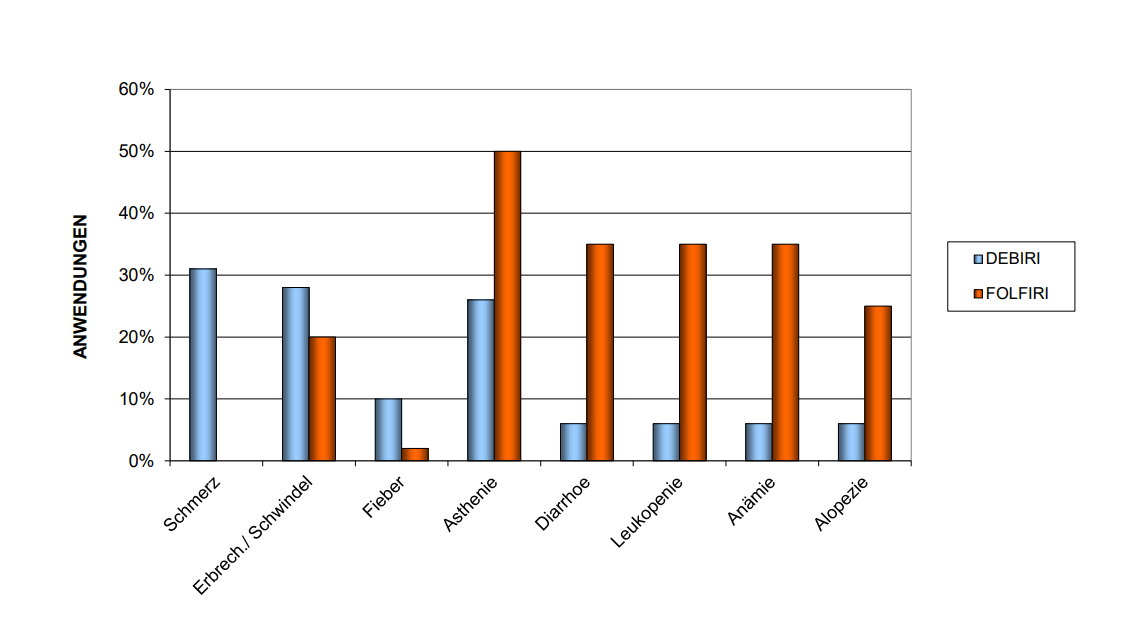
**DEBIRI = TACE, FOLFIRI = IV therapy; مع DEBIRI، تحسنت جودة حياة 90٪ من المرضى لمدة 32 أسبوعاً
العلاج الكيميائي الكهربائي
العلاج الكيميائي الكهربائي يجمع بين النبضات الكهربائية وأدوية مكافحة السرطان لتعزيز فعالية علاج الورم الأرومي الدبقي. هذا النهج المبتكر يوفر العديد من المزايا المحتملة:
- تقوم الأقطاب الكهربائية المتخصصة بتوصيل نبضات كهربائية قصيرة إلى منطقة الورم من خلال فتحة صغيرة في الجمجمة
- يعمل المجال الكهربائي على زيادة نفاذية غشاء الخلية مؤقتاً، مما يسمح للأدوية بالدخول إلى خلايا الورم بكفاءة تصل إلى 300 مرة أكثر
- تظل تأثيرات العلاج محصورة بدقة ضمن المنطقة المُستهدِفة، مما يُقلل من الضرر الذي يلحق بأنسجة الدماغ السليمة المحيطة
- يمكن إكمال الإجراء بسرعة في جلسة واحدة، وربما أثناء الجراحة
تُظهر الدراسات المعملية نتائج واعدة، حيث تم القضاء على الورم تماماً لدى حوالي 70٪ من المرضى الذين خضعوا للعلاج. تتلاشى آثار الأنسجة الموضعية الخاضعة للسيطرة تدريجياً مع استبدال المناطق المُعالجة بفراغات مملوءة بالسوائل من خلال عمليات الشفاء الطبيعية. قد يُقدم هذا النهج قيمة خاصة للمرضى الذين يعانون من أورام في مناطق دماغية عميقة أو بليغة، حيث تحمل الجراحة التقليدية مخاطر مُفرطة.

العلاج بالليزر الخلالي الحراري
العلاج الخلالي الحراري بالليزر (LITT)، أو الاجتثاث بالليزر، يُقدمان أملاً جديداً للمرضى الذين لا يستطيعون الخضوع لإزالة الورم بالطريقة التقليدية. يستخدم هذا النهج التوجيه بالرنين المغناطيسي لتوجيه ليزر متخصص داخل الورم. يُصدر الليزر طاقة حرارية يتم التحكم فيها بعناية والتي تعمل على تدمير الخلايا السرطانية بينما تساعد المراقبة في الوقت الحقيقي على حماية الأنسجة السليمة المحيطة.
توصلت دراسات أجراها باحثون في كليفلاند كلينيك إلى أن هذا النهج يوفر نتائج مماثلة للبقاء على قيد الحياة مثل الخزعة التي يليها العلاج الإشعاعي والعلاج الكيميائي في مرضى الورم الأرومي الدبقي الذين تم تشخيصهم حديثاً وغير المناسبين للجراحة التقليدية. عادةً ما تحدث النتائج المُثلى مع الأورام الأصغر حجماً (أقل من 11 سم مكعب) وفي المرضى الأصغر سناً (أقل من 70 عاماً).
من المثير للاهتمام أن الحرارة الناتجة عن LITT قد تؤدي بشكل طبيعي إلى تعطيل الحاجز الدموي الدماغي مؤقتاً، مما قد يُعزز مدى وصول العلاجات اللاحقة إلى الورم. بالنسبة للورم الأرومي الدبقي المتكرر، تُشير الأبحاث إلى أن العلاج بالليزر يوفر ما يقرب من 11.5 شهراً من فائدة البقاء على قيد الحياة بعد الإجراء – وهو أمر مهم بالنظر إلى الخيارات المحدودة للمرض المتكرر.
تحليلات مُقارنة: العلاجات التقليدية مقابل العلاجات المبتكرة
عند تقييم خيارات العلاج، فإن فهم كيفية مقارنة العلاج الجديد للورم الأرومي الدبقي مع البروتوكولات القياسية يساعد المرضى والأطباء على اتخاذ قرارات مستنيرة. تتناول هذه التحليلات العوامل الرئيسية، بما في ذلك الفعالية، والآثار الجانبية، وتأثير جودة الحياة، وإمكانية الوصول.
| نهج العلاج | معدل الاستجابة | فائدة البقاء على قيد الحياة | الآثار الجانبية | مدة العلاج | نطاق تكلفة العلاج (أوروبا) | الوصول إلى الرعاية |
|---|---|---|---|---|---|---|
| الجراحة | ٪80-60 (مراحل الورم الأرومي الدبقي المبكرة) ٪30-20 (متقدم) | الأساس للعلاجات الأخرى | الألم، وخطر العدوى، ووقت التعافي | إجراء لمرة واحدة | 25.000 € - 50.000 € | متوفر على نطاق واسع |
| الإشعاع التقليدي | ٪60-40 (مبكر) ٪25-15 (متقدم) | جزء من البروتوكول القياسي | التعب، وتهيُج الجلد، والآثار الإدراكية | 6 أسابيع (جلسات يومية) | 28.000 € - 42.000 € | متوفر في معظم مراكز سرطان الدماغ |
| العلاج بالبروتون | ٪70-50 (مبكر) ٪25-15 (متقدم) | مُشابه للإشعاع التقليدي مع آثار جانبية أقل | خفيفة إلى متوسطة | 6 أسابيع (جلسات يومية) | 56.900 € - 90.500 € | يقتصر على المراكز المتخصصة |
| العلاج بالخلايا المتغصنة | ٪95-85 (مبكر) ٪80-60 (متقدم) | إمكانية تحقيق فائدة البقاء على قيد الحياة على المدى الطويل | طفيفة (أعراض تُشبه أعراض الإنفلونزا بشكل أساسي) | إجراء لمرة واحدة مع تأثيرات دائمة | 20.000 € - 38.000 € | متوفر في مراكز متخصصة |
| العلاج الكيميائي الكهربائي | ~٪70 استجابة كاملة في الدراسات | تحسُن متوسط البقاء على قيد الحياة لمدة 9-14 شهراً | تأثيرات موضعية، وتأثير جهازي ضئيل | جلسة واحدة | 30.000 € - 45.000 € لكل دورة علاج | متخصص للغاية، توافر محدود |
| العلاج بالليزر الحراري الخلالي | الأفضل للأورام التي يقل حجمها عن 11cc | ~11.5 شهراً للمرض المتكرر | طفيفة | إجراء لمرة واحدة | جزء من التكاليف الجراحية | يقتصر على المراكز المتقدمة |
*بيانات Booking Health. تختلف معدلات الاستجابة وفوائد البقاء على قيد الحياة بشكلٍ كبير بناءً على العوامل الفردية للمريض.
قصص نجاح المرضى
تُقدم تجارب المرضى الدليل الأكثر إقناعاً على فعالية العلاج. تُظهر الرحلة الطبية لـ داريا روجرز كيف يُمكن للعلاجات المبتكرة أن تُغير النتائج المتوقعة.
بعد تعرضها لنوبة صرع في يناير 2024، تم تشخيص إصابة داريا البالغة من العمر 50 عاماً بالورم الأرومي الدبقي متعدد الأشكال. وعلى الرغم من نجاح الإزالة الجراحية للورم، فقد أبلغها فريق الرعاية الصحية بالأخبار المُدمرة التي تُفيد بأن العلاجات القياسية عادةً ما توفر 12 إلى 15 شهراً فقط من متوسط العمر المتوقع دون أي فرصة لـ البقاء على قيد الحياة على المدى الطويل على الإطلاق.
"لقد دمرني التشخيص تماماً،" تتذكر داريا قائلةً. "بينما كنت لا أزال في مرحلة التعافي، بدأ زوجي موريس في البحث عن خيارات إضافية تتجاوز ما كان متاحاً في وطننا الأصلي."
كشف بحثهم أن العلاج المناعي بالخلايا المتغصنة متاحاً لعلاج الورم الأرومي الدبقي في ألمانيا. وبمساعدة المرضى بواسطة أحد المسهليين الطبيين الدوليين، تمكنوا من ترتيب العلاج بعد ثلاثة أسابيع فقط من إجراء الجراحة الأولية لداريا.
"في ألمانيا علاج الورم الأرومي الدبقي كان بسيطاً بشكلٍ مدهش،" كما توضح داريا. "جمعوا عينة من دمي، وأعطوني علاجات داعمة، وأعدّوا لي لقاحاً شخصياً في مختبرهم. كان الإجراء بأكمله مريحاً ولم يُسفر عن أي آثار جانبية."
بعد عودتها إلى أيرلندا، تابعت داريا العلاج الإشعاعي والعلاج الكيميائي التقليدي. "أنا مقتنعة بأن العلاج المناعي لـ GBM في ألمانيا ساعدني على تحمّل العلاجات التقليدية بشكل ملحوظ. رغم خضوعي لعلاجات إشعاعية يومية خمس مرات أسبوعياً، فقد حافظت على طاقتي ولم أعاني من آثار جانبية تُذكر."
الأمر الأكثر تشجيعاً هو أن فحوصات التصوير بالرنين المغناطيسي MRI / التصوير المقطعي المحوسب CT بعد ثلاثة أشهر من انتهاء العلاج الإشعاعي لم تُظهر أي دليل على عودة الورم. الفحوصات الإضافية التي أجريت في أكتوبر 2024 استمرت بعدم إظهار أي وجود للمرض.
تؤكد عائلة روجرز أيضاً على مدى أهمية التوجيه المتخصص في تحديد خيارات العلاج: "عند مواجهة هذا التشخيص، حتى المهام اليومية الأساسية تُصبح مُرهقة. "إن الحصول على مساعدة متخصصة في الترتيبات الطبية جعل الوصول إلى هذا العلاج الذي يُغير الحياة ممكناً."
خيارات العلاج للمرحلة المتأخرة والورم الأرومي الدبقي المتكرر
على الرغم من التطورات في العلاج، يتعرض العديد من مرضى الورم الأرومي الدبقي في نهاية المطاف لانتكاس الورم أو تقدمه. يتطلب هذا الواقع تخطيط علاج شخصي يعتمد على عوامل مختلفة: موقع الورم، وتاريخ العلاج السابق، والحالة الصحية العامة، والملف الجزيئي للورم، وأهداف المريض الفردية.
بالنسبة للمرض المتكرر، يمكن النظر في عدة طرق:
- إجراء جراحة إضافية عندما يكون ذلك ممكناً بأمان
- علاجات إعادة التشعيع المُستهدِفة بعناية
- مُركبات العلاج الكيميائي البديلة
- طرق العلاج المناعي، بما في ذلك التطعيم بالخلايا المتغصنة
- التقنيات طفيفة التوغل مثل LITT و TACE
نظراً لتعقيد علاج المرحله المتأخرة من الورم الأرومي الدبقي، فإن التوجيه المتخصص يمكن أن يؤثر بشكلٍ كبير على نتائج العلاج من خلال توسيع الخيارات إلى ما هو أبعد من الرعاية القياسية لتشمل الأساليب المبتكرة التي قد تؤدي إلى إطالة العمر. يبقى الهدف النهائي هو تزويد كل مريض بالعلاج الذي يُقدم أفضل نتيجة ممكنة لحالته الفريدة من خلال أخصائيي أورام الدماغ ذوي الخبرة المناسبة.
تعمل مُسهل السياحة الطبية الدولية Booking Health، على تبسيط هذه الرحلة من خلال توفير إمكانية الوصول إلى أفضل المستشفيات لعلاج الورم الأرومي الدبقي حول العالم. يستفيد المرضى من خطط العلاج الشخصية التي يتم تطويرها من قبل أفضل خبراء الورم الأرومي الدبقي، وعمليات التوثيق الطبي الإنسيابية، والمواعيد ذات الأولوية في مراكز العلاج المتقدمة. يتيح هذا الدعم الشامل للمرضى التركيز على صحتهم بدلاً من الاهتمام بالجوانب اللوجستية، مع إمكانية الوصول إلى أحدث العلاجات المتاحة دولياً مع تكلفة علاج الورم الأرومي الدبقي المناسبة.
إدارة الورم الأرومي الدبقي في الوقت المناسب مع Booking Health
يُعد العثور على أفضل استراتيجية علاج لحالتك السريرية مهمة صعبة. كونك مُرهق بالفعل من جلسات العلاج المتعددة، واستشارة العديد من المتخصصين، وتجربة مختلف التدخلات العلاجية، قد تجد نفسك في حيرة من أمرك بسبب المعلومات التي يقدمها الأطباء لك. في مثل هذه الحالة، من السهل اختيار خيار مباشر أو اتباع بروتوكولات علاجية موحدة ذات قائمة طويلة من الآثار الضارة بدلاً من اختيار خيارات علاج مبتكرة عالية التخصص.
لاتخاذ قرار مستنير والحصول على خطة مُخصصة لإدارة السرطان، والتي سيتم تصميمها لتناسب حالتك السريرية المحددة، استشر الخبراء الطبيين في شركة Booking Health. باعتبارها رائدة في تقديم أحدث الابتكارات الطبية لأكثر من 12 عاماً بالفعل، تتمتع Booking Health بخبرة قوية في إنشاء برامج معقدة لإدارة السرطان في كل حالة. كشركة مرموقة، تُقدم Booking Health خطط علاج مُخصصة للورم الأرومي الدبقي مع حجز مباشر للمستشفى ودعم كامل في كل مرحلة، بدءاً من العمليات التنظيمية وصولاً إلى المساعدة أثناء العلاج. نحن نقدم:
- تقييم وتحليل التقارير الطبية
- تطوير برنامج الرعاية الطبية
- اختيار موقع مناسب للعلاج
- إعداد الوثائق الطبية وإرسالها إلى المستشفى المناسب
- الاستشارات التحضيرية مع الأطباء لتطوير برامج الرعاية الطبية
- نصائح الخبراء أثناء الإقامة في المستشفى
- رعاية المتابعة بعد عودة المريض إلى بلده الأصلي بعد إكمال برنامج الرعاية الطبية
- الاهتمام بالإجراءات الرسمية كجزء من التحضير لبرنامج الرعاية الطبية
- تنسيق وتنظيم إقامة المريض في بلد أجنبي
- المساعدة في الحصول على التأشيرات وتذاكر الطيران
- مُنسق شخصي ومترجم فوري مع دعم 24/7
- الميزانية الشفافة بدون تكاليف خفية
الصحة جانبٌ لا يُقدّر بثمن في حياتنا. ينبغي تفويض إدارة شيء هش للغاية ولكنه ثمين فقط إلى الخبراء ذوي الخبرة والسمعة المُثبتة. Booking Health هى شريك جدير بالثقة، يساعدك على طريق الحصول على صحة أقوى وجودة حياة أفضل. اتصل بمستشارنا الطبي لمعرفة المزيد عن إمكانيات العلاج الشخصي باستخدام الطرق المبتكرة للورم الأرومي الدبقي مع كبار المتخصصين في هذا المجال.
علاج السرطان المتقدم: قصص نجاح المرضى مع Booking Health
الأسئلة الشائعة لمرضانا
أرسل طلب للعلاجتظل توقعات الورم الأرومي الدبقي تحدياً صعباً، حيث يبلغ متوسط البقاء على قيد الحياة 14-18 شهراً مع العلاج القياسي. ومع ذلك، يستجيب بعض المرضى بشكلٍ أفضل للعلاج، وخاصةً أولئك الذين لديهم بعض العلامات الحيوية مثل MGMT المثيلي. العلاجات الجديدة تعمل على تحسين التوقعات أيضاً.
الورم الأرومي الدبقي يمكن أن يتطور بصمت لمدة أسابيع إلى أشهر. معدل النمو السريع لهذه الدرجة الرابعة من الورم يعني أن معظم المرضى يشهدون الأعراض في غضون 3-6 أشهر من تكوين الورم، على الرغم من أن هذا يختلف بناءً على موقع الورم وبيولوجيا الورم الفردية.
بدون علاج، يؤدي الورم الأرومي الدبقي عادةً إلى تراجع وتدهور كبير في غضون 3-4 أشهر من التشخيص. تُصبح إدارة الألم أمراً بالغ الأهمية خلال هذه الفترة، حيث تُسبب الأورام غير المعالجة ضغطاً متزايداً داخل الدماغ، مما يؤدي إلى تدهور عصبي تقدُمي.
تُقدر هذه الحالات بحوالي 3.2 حالة لكل 100.000 شخص سنوياً، وهو ما يُمثل حوالي 48٪ من جميع الأورام الخبيثة الأولية في الدماغ. على الرغم من ندرته النسبية مقارنةً بأنواع السرطان الأخرى، إلا أنه الورم الخبيث الأكثر شيوعاً في ممارسات الأورام العصبية حول العالم.
الورم الدبقي هو فئة واسعة من الأورام التي تنشأ من الخلايا الدبقية في الدماغ، في حين أن الورم الأرومي الدبقي هو على وجه التحديد ورم دبقي من الدرجة الرابعة – النوع الأكثر عدوانية. تشمل الأورام الدبقية الأخرى أوراماً أقل درجة، مثل الورم النجمي، والتي عادةً ما تكون توقعاتها أفضل.
يتميز الورم الأرومي الدبقي بسرعة نمو استثنائية. بدون علاج، يمكن أن يتضاعف حجم هذه الأورام كل أسبوعين إلى ثلاثة أسابيع. الاختبارات الجزيئية يمكنها تحديد العوامل المؤثرة على معدل النمو، مثل حالة طفرة IDH، مما يساعد الأطباء على التنبؤ بسلوك الورم.
العلاج القياسي يتضمن الاستئصال الجراحي الآمن إلى أقصى حد، يليه العلاج الإشعاعي مع العلاج الكيميائي المتزامن. يستمر هذا العلاج المساعد لمدة 6-12 شهراً بعد العلاج الإشعاعي. للحصول على أفضل نتائج، ينبغي على المرضى استشارة فرق متعددة التخصصات في مستشفيات جامعية أو مراكز متخصصة.
تُعد الإزالة الكاملة تحدياً صعباً لأن الورم الأرومي الدبقي يتسلل إلى ما وراء حدود الورم المرئية. بينما يستخدم الجراحون تقنيات متقدمة لأقصى قدر من الإزالة، تبقى خلايا السرطان المجهرية عادةً. قد يوفر البحث عن العلاج في الخارج إمكانية الوصول إلى أساليب جراحية متخصصة غير متوفرة محلياً للأورام المعقدة.
تشمل الآثار الجانبية الشائعة التعب، والغثيان، وتساقط الشعر، وتغيرات معرفية ناتجة عن الإشعاع. تساعد تقنيات المراقبة غير الغازية في إدارة هذه التأثيرات في وقتٍ مبكر.
يمثل العلاج بالخلايا المتغصنة تقدماً كبيراً، حيث يعمل على تعليم جهاز المناعة كيفية التعرف على الخلايا السرطانية ومهاجمتها. تُقدم تقنيات الأشعة التداخلية مثل الانصمام والعلاج الكيميائي الكهربائي طرقاً مُستهدِفة للحالات المعقدة. يسمح الطب الدقيق بتخصيص العلاج على أساس خصائص الورم، في حين تستمر البروتوكولات التجريبية، بما في ذلك العلاج بالخلايا التائية CAR-T وأساليب العلاج الجيني، في إظهار نتائج واعدة أيضاً.
يُظهر العلاج المناعي بالخلايا المتغصنة نتائج واعدة للغاية مع معدلات استجابة تتراوح بين 85-95٪ في المرض المبكر. عند دمجه مع البروتوكولات القياسية، يُحسّن النتائج بشكل ملحوظ. تُقدم العلاجات البديلة، مثل العلاج الحراري بالليزر والعلاج الكيميائي الكهربائي، خيارات إضافية. يتطلب إيجاد أفضل خيارات عادةً البحث عن العلاج في الخارج والتحقق من التغطية التأمينية.
اختر العلاج في الخارج وستحصل بالتأكيد على أفضل النتائج!
المؤلفون:
تم تحرير المقال من قبل خبراء طبيين وأطباء معتمدين من مجلس الأطباء الدكتورة ناديجدا إيفانيسوفا و الدكتور بوغدان ميخالنيوك. لعلاج الحالات المشار إليها في المقال، يجب استشارة الطبيب؛ المعلومات الواردة في المقالة ليست مخصصة للتطبيب الذاتي!
سياستنا التحريرية، التي توضح بالتفصيل التزامنا بالدقة والشفافية، متاحة هنا. انقر على هذا الرابط لمراجعة سياساتنا.
المصادر:
اقرأ:
علاج مبتكر للورم الأرومي الدبقي في ألمانيا: العلاج بالخلايا المتغصنة للسرطان
قائمة المقالات:
- فهم الورم الأرومي الدبقي: نظرة عامة
- بروتوكولات العلاج القياسية للورم الأرومي الدبقي
- النهج المبتكر: العلاج بالخلايا المتغصنة
- النهج المبتكر: تقنيات الأشعة التداخلية
- تحليلات مُقارنة: العلاجات التقليدية مقابل العلاجات المبتكرة
- قصص نجاح المرضى
- خيارات العلاج للمرحلة المتأخرة والورم الأرومي الدبقي المتكرر
- إدارة الورم الأرومي الدبقي في الوقت المناسب مع Booking Health
- الأسئلة الشائعة لمرضانا
لا تعرف من أين تبدأ؟
اتصل بـ Booking Health